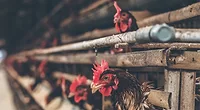Does the Delaney Clause Interfere With FDA's Science-Based Decision-Making?

Image credit: wirestock via Freepik
On January 15, 2025, the U.S. Food and Drug Administration (FDA) announced the revocation of the authorization for the use of FD&C Red No. 3 (Red 3) in food and ingested drugs.1 Although the news was not a surprise to the food and drug industries, FDA's announcement could be perceived as odd because it made clear that the available scientific information does not support a conclusion that the permitted uses of Red 3 pose a human health risk. If not to protect human health, then why were the authorizations revoked?
The answer to this lies in a specific provision of the 1960 Color Additives Amendment to the Federal Food, Drug and Cosmetic Act: the Delaney Clause.
The Delaney Clause prohibits FDA from deeming a color additive to be safe if it is found "to induce cancer when ingested by man or animal, or if it is found by the Secretary, after tests which are appropriate for the evaluation of the safety of additives for use in food, to induce cancer in man or animal."2 In the case of Red 3, multiple studies showed that high levels of exposure caused cancer in male rats due to a specific hormonal mechanism.3 Carcinogenicity was not observed when tested in female rats, and either sex of mice, gerbils, or dogs. Furthermore, FDA officials found no association between current consumption patterns of Red 3 and any human health risk.
Despite finding no human health risk, FDA is prohibited from concluding that Red 3 is safe for human consumption, as a matter of law, due to the language of the Delaney Clause. If FDA's regulatory decision-making should be based on science, but the Delaney Clause prohibits FDA from considering the totality of the available scientific evidence in making safety determinations for food and color additives, can the Delaney Clause and science-based decision making coexist?
At a high level, the Color Additives Amendment authorized FDA to regulate color additives in food, drugs, and medical devices in the U.S. The Delaney Clause was intended to act as a guiding hand in this effort at a time when the field of regulatory toxicology and understandings of carcinogenesis were still developing. However, in the 60 years since the Color Additives Amendment and Delaney Clause, understandings of cancer causation, disease progression, and the utility (and limitations) of cellular and animal models as predictive tools for human risk assessment have greatly increased.
As of today, scientific investigations have revealed that safe levels of exposure and appropriate risk assessment methodologies for substances vary quite considerably.4,5 In most circumstances, the regulation and risk assessment of DNA-reactive materials is based on the "one-hit" hypothesis, wherein exposure to a single genotoxic molecule could induce DNA damage that increases the risk of developing cancer.6 According to regulators, this theory supports reducing consumer exposures to such compounds to levels that are as low as reasonably achievable.
However, for non-genotoxic substances, there are considered to be thresholds below which there is no human health risk, even if evidence suggests that such substances may induce cancer in certain animal models.6,7 Considering these threshold-mediated effects, the prevailing thought among regulators and risk assessors is that certain low-level exposures are inherently safe. As such, exposures to non-genotoxic substances, in general, need not be reduced to the same extent as their genotoxic counterparts.
Looking for quick answers on food safety topics?
Try Ask FSM, our new smart AI search tool.
Ask FSM →
Furthermore, scientific experts and authoritative bodies both recognize that induction of cancer in some common laboratory animals is not always predictive of human carcinogenicity. Common examples of species-specific mechanisms of carcinogenesis for non-genotoxic substances include forestomach tumors in rodents and thyroid stimulating hormone (TSH)-induced thyroid tumors.4 The latter of these is the specific mechanism attributed to Red 3's carcinogenicity in male rats. Notably, FDA and other authoritative bodies including the Joint Food and Agriculture Organization of the United Nations (FAO)/World Health Organization (WHO) Expert Committee on Food Additives (JECFA), the European Food Safety Authority (EFSA), and Food Standards Australia New Zealand (FSANZ) have all concluded that Red 3-induced thyroid tumors observed in rats are of limited relevance to humans.4 In fact, after comprehensive reviews of the available safety information, EFSA and FSANZ found no need to ban Red 3, and it remains on the market for use in certain foods in those jurisdictions.8,9
In guidance documents applicable to the color additive petition process,10 FDA makes clear that "…the design of any study and assessment of the results should be based on sound scientific principles, not rote adherence to guidance," and that "…all available unpublished toxicity studies on the petitioned substance as well as published toxicity studies pivotal to the safety assessment" should be provided for review.
Although this guidance should go without saying, the criticality of considering all available scientific information when conducting regulatory risk assessments warrants the reiteration of what is implicitly understood by the scientific community. However, under the Delaney Clause, it is clear that FDA cannot always consider the totality of this science in its regulatory decision-making. Considering that the existing language of the Delaney Clause is challenging the ability to utilize all available scientific information in its regulatory decision-making, clarification of the language in this provision to reflect the current state-of-science would greatly assist FDA in objectively pursuing its mission.
References
- Food and Drug Administration (FDA). "Color Additive Petition From Center for Science in the Public Interest, et al.; Request To Revoke Color Additive Listing for Use of FD&C Red No. 3 in Food and Ingested Drugs." Federal Register 4628. January 16, 2025. https://www.federalregister.gov/d/2025-00830.
- 21 U.S.C. § 379e(b)(5)(B).
- FDA. "FDA to Revoke Authorization for the Use of Red No. 3 in Food and Ingested Drugs." Constituent Update. January 15, 2025. https://www.fda.gov/food/hfp-constituent-updates/fda-revoke-authorization-use-red-no-3-food-and-ingested-drugs.
- Batke, M., F.M. Afrapoli, R. Kellner, J.F. Rathman, C. Yang, M.T.D. Cronin, S.E. Escher. "Threshold of Toxicological Concern—An Update for Non-Genotoxic Carcinogens." Frontiers in Toxicology 3 (June 24, 2021)
- Bevan, R.J. and P.T.C. Harrison. "Threshold and non-threshold chemical carcinogens: A survey of the present regulatory landscape." Regulatory Toxicology and Pharmacology 88 (2017): 291–302.
- Menz, J., M.E. Götz, U. Gündel, et al. "Genotoxicity assessment: Opportunities, challenges and perspectives for quantitative evaluations of dose-response data." Archives of Toxicology 97, no. 9 (September 2023): 2303–2328.
- More, S.J., V. Bampidis, D. Benford, et al., EFSA Scientific Committee. "Guidance on the Use of the Threshold of Toxicological Concern Approach in Food Safety Assessment." EFSA Journal 17, no. 6 (2019). https://doi.org/10.2903/j/efsa.2019.5708.
- European Food Safety Authority (EFSA). "Panel on Food Additives and Nutrient Sources Added to Food (ANS); Scientific Opinion on the Re-Evaluation of Erythrosine (E 127) as a Food Additive." EFSA Journal 9, no. 1 (2011). www.efsa.europa.eu/efsajournal.
- Food Standards Australia New Zealand (FSANZ). "Final Assessment Report Application A603 Red 3 Erythrosine in Food Colouring Preparations." May 7, 2010. https://www.foodstandards.gov.au/sites/default/files/food-standards-code/applications/Documents/A603%20Erythrosine%20FAR%20FINAL.pdf.
- FDA. "Guidance for Industry: Questions and Answers About the Food Additive or Color Additive Petition Process." April 2011. https://www.fda.gov/regulatory-information/search-fda-guidance-documents/guidance-industry-questions-and-answers-about-food-additive-or-color-additive-petition-process.
Authors
Peter Coneski, Ph.D. is a Senior Scientific Advisor in K&L Gates LLP's Health Care and FDA practice. He provides technical assistance in evaluating the regulatory compliance of food additives and food contact materials in the U.S. and other jurisdictions. He also develops strategic testing plans and protocols for analytical data acquisition that support industry filings to regulatory agencies globally. In addition to his work related to food additives and food packaging materials, Peter advises clients on global sustainability initiatives, Extended Producer Responsibility schemes, and compliance with emerging legislations impacting companies operating in a global marketplace.
Peter also has an extensive research background, authoring numerous peer-reviewed publications and holding several patents related to his work. He was granted an American Society for Engineering Education Postdoctoral Fellowship at the U.S. Naval Research Laboratory, where he focused on the development and characterization of novel, high-performance polymeric and composite materials. While earning his Ph.D., he developed absorbable and persistent polymer with enhanced biocompatibility for use as implantable biomaterials.
Peter holds a Ph.D. and a master's degree from the University of North Carolina at Chapel Hill, and a B.S. degree from Clarkson University.
Natalie Rainer, J.D., M.P.H. is a Partner and a Member of K&L Gates LLP's Health Care and FDA practice. She focuses her practice primarily in the food and beverage industry. Natalie practices food and drug law, advising clients on regulatory requirements for foods, dietary supplements, cosmetics, and food and drug packaging in jurisdictions around the world, including North America, Latin America, Europe, Asia, and the Middle East.
Natalie has in-depth experience in evaluating the regulatory status of food additives, color additives, and food contact materials. She counsels companies on advertising and labeling requirements, including claim substantiation, nutrition labeling, menu labeling, and environmental claims. She also provides guidance regarding compliance with USDA regulations, including the Bioengineered Labeling rules, organic rules, and regulations related to additives in meat and poultry products.
Natalie holds a J.D. from Georgetown University, an M.P.H. degree from The Johns Hopkins University Bloomberg School of Public Health, and a B.A. degree from the University of California–Berkeley.








